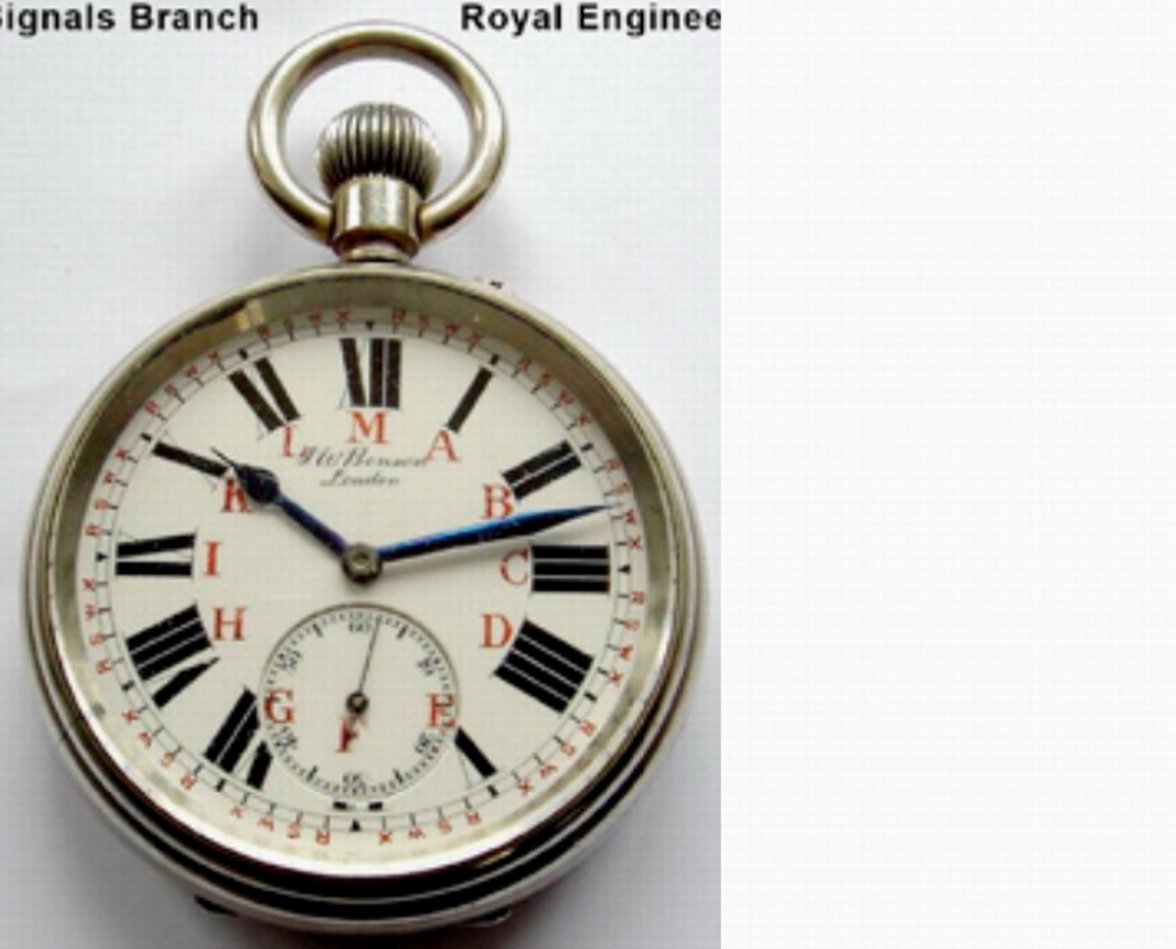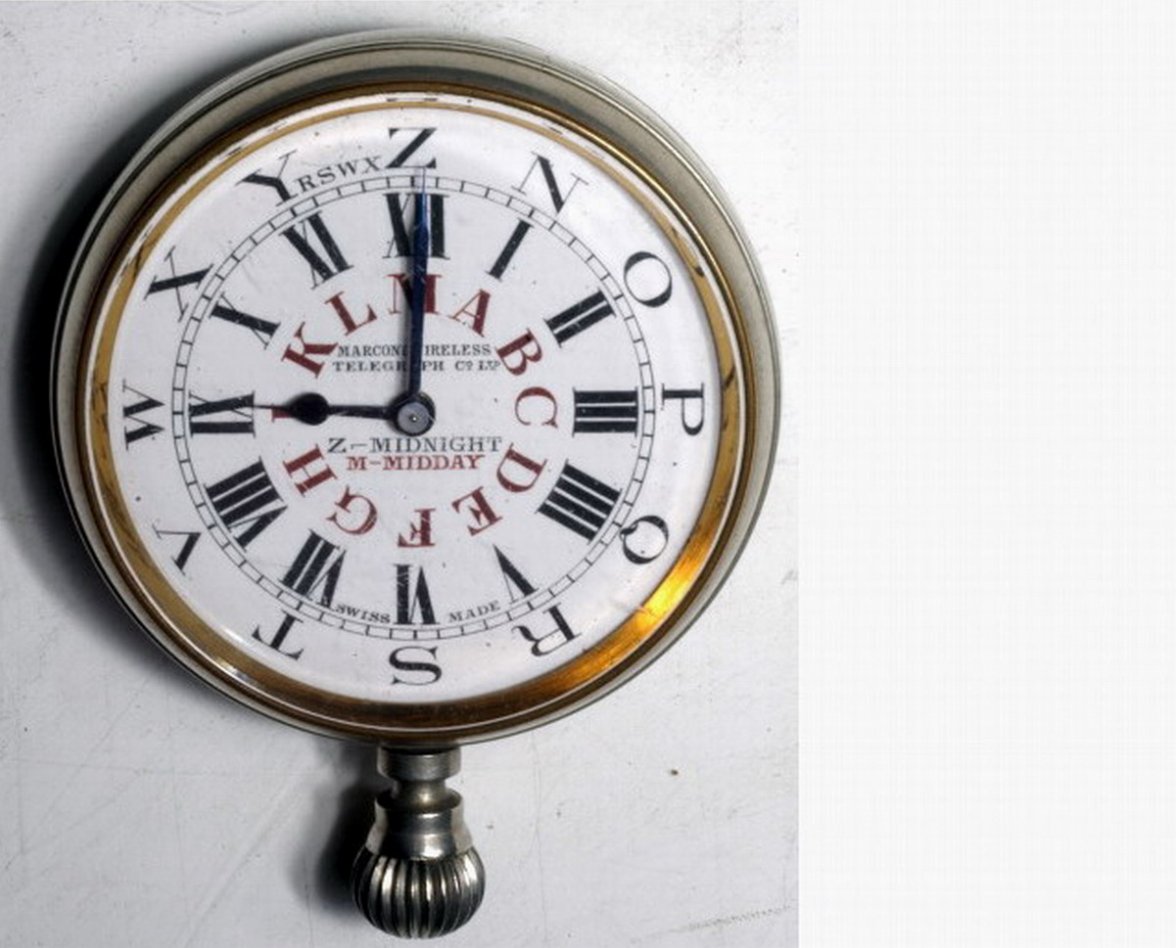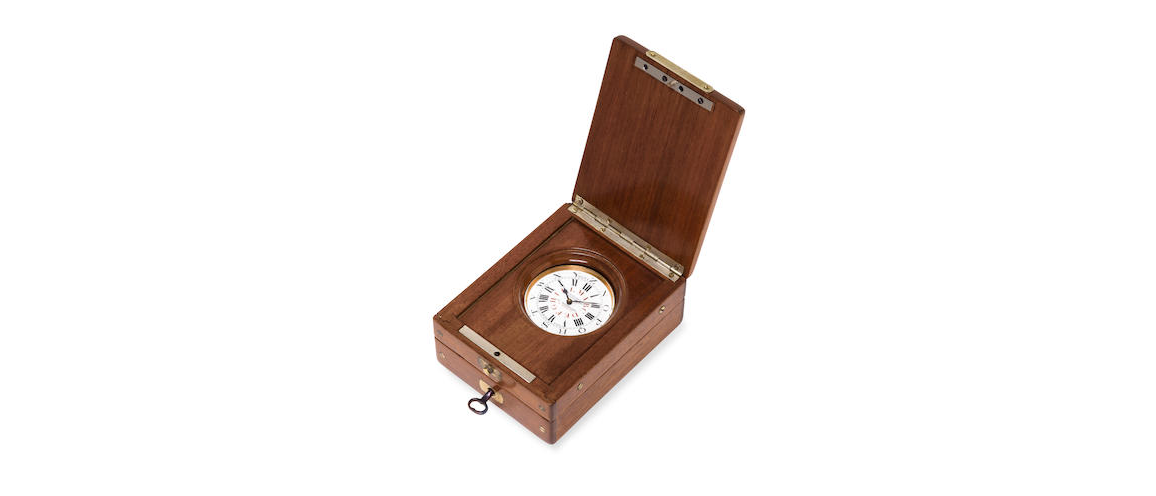OMTOM
·A watch for sale on eBay claims to be a ‘Marconi Morse watch’ – which in my opinion it is not. If you’re interested, see another thread which relates:
NOT ALL THAT IT CLAIMS TO BE…
https://omegaforums.net/threads/not-all-that-it-claims-to-be….121714/
However, the subject of clocks and watches that were involved in the transmission of Morse may be of interest. These go back to about 1870 and were in use well into the 20th century: the Marconi ‘Goliath’ pocket watch was a refined version of these early developments. The early users were the railways and the military. An interesting history is covered in ‘The History of Telegraphy’ by Alan Beauchamp:
https://nvhrbiblio.nl/biblio/boek/Beauchamp - History of telegraphy.pdf
The early history starts on page 127 – and the use of coded letters for transmitting time with messages follows (in 1880, the British Army produced a “Manual of Instruction in Army Signalling”). Page 129 gives an explanation of the use of letters:
“The twelve letters from A to M denoted the hours, and also the minutes at 5 min intervals (0, 5, 10, etc.). The intervening four minutes were denoted by the letters, R, S, W, X.”
It is for this reason that the dials of some of these watches (and sometimes the bezel) show the letters RSWX.
The story is also covered by David Read in ‘Observatory Time by Radio: 1901 – 1970’:
https://clockdoc.org/gs/handler/getmedia.ashx?moid=46426&dt=3&g=1
On page 5, David Read states that “in the days of the cable Morse messaging system, it became a requirement governed by international agreement that all telegraphs should indicate the time at which a message was sent. The means for doing this in Morse had been devised in the British railway system and consisted of a shorthand method by which the time could quickly be indicated by keying no more than three letters rather than laboriously spelling out the words in code. The dials of clocks and watches used by telegraphers working for the railroad companies were printed to facilitate this requirement” – and further – “Railway Signalling Instruments by W.E. Langdon, published in London in 1877 would seem to be the earliest reference to the system”.
He then writes that
“In the British Army, the railway’s method was taken up by the Signals Branch of the Royal Engineers, and was in place by the time that the new wireless telegraphy was in use for WWI.”
David Read shows an image of a Benson ‘Goliath’ pocket watch used by the British Army (as we see, the Signals Branch of the Royal Engineers). Here we see the letters A to M, and also that the minutes are all marked RSWX.
A similar watch by T. R. Russell of Liverpool was auctioned earlier this year, shown below:
David Read takes the story further, as follows:
“Marconi’s companies also used the railway time code system but adapted it to their own requirements, so that the code was extended to indicate night time as well as daytime. In the worldwide system of wireless telegraphy set up by Marconi’s Wireless Telegraph Company (MWT), it was found necessary to add a further set of twelve letters to provide this differentiation and the letters N to Z (excluding U) were added to the dial; M meaning midday as before and Z meaning midnight.”
In 2004, the Marconi Corporation presented an original of these watches to the History of Science Museum in Oxford, UK, as shown in the image below:
We can see that the letters ‘RSWX’ appear between 11 and 12 o’clock (just as a reminder!).
David Read finishes our story with the comment:
“Thanks to Marconi, the British now possessed an efficient wireless service between ships and coastal stations which embraced ships of all nations. Consequently, in 1906 an International Convention was signed that was based on the Marconi system.”
All a long time ago!
NOT ALL THAT IT CLAIMS TO BE…
https://omegaforums.net/threads/not-all-that-it-claims-to-be….121714/
However, the subject of clocks and watches that were involved in the transmission of Morse may be of interest. These go back to about 1870 and were in use well into the 20th century: the Marconi ‘Goliath’ pocket watch was a refined version of these early developments. The early users were the railways and the military. An interesting history is covered in ‘The History of Telegraphy’ by Alan Beauchamp:
https://nvhrbiblio.nl/biblio/boek/Beauchamp - History of telegraphy.pdf
The early history starts on page 127 – and the use of coded letters for transmitting time with messages follows (in 1880, the British Army produced a “Manual of Instruction in Army Signalling”). Page 129 gives an explanation of the use of letters:
“The twelve letters from A to M denoted the hours, and also the minutes at 5 min intervals (0, 5, 10, etc.). The intervening four minutes were denoted by the letters, R, S, W, X.”
It is for this reason that the dials of some of these watches (and sometimes the bezel) show the letters RSWX.
The story is also covered by David Read in ‘Observatory Time by Radio: 1901 – 1970’:
https://clockdoc.org/gs/handler/getmedia.ashx?moid=46426&dt=3&g=1
On page 5, David Read states that “in the days of the cable Morse messaging system, it became a requirement governed by international agreement that all telegraphs should indicate the time at which a message was sent. The means for doing this in Morse had been devised in the British railway system and consisted of a shorthand method by which the time could quickly be indicated by keying no more than three letters rather than laboriously spelling out the words in code. The dials of clocks and watches used by telegraphers working for the railroad companies were printed to facilitate this requirement” – and further – “Railway Signalling Instruments by W.E. Langdon, published in London in 1877 would seem to be the earliest reference to the system”.
He then writes that
“In the British Army, the railway’s method was taken up by the Signals Branch of the Royal Engineers, and was in place by the time that the new wireless telegraphy was in use for WWI.”
David Read shows an image of a Benson ‘Goliath’ pocket watch used by the British Army (as we see, the Signals Branch of the Royal Engineers). Here we see the letters A to M, and also that the minutes are all marked RSWX.
A similar watch by T. R. Russell of Liverpool was auctioned earlier this year, shown below:
David Read takes the story further, as follows:
“Marconi’s companies also used the railway time code system but adapted it to their own requirements, so that the code was extended to indicate night time as well as daytime. In the worldwide system of wireless telegraphy set up by Marconi’s Wireless Telegraph Company (MWT), it was found necessary to add a further set of twelve letters to provide this differentiation and the letters N to Z (excluding U) were added to the dial; M meaning midday as before and Z meaning midnight.”
In 2004, the Marconi Corporation presented an original of these watches to the History of Science Museum in Oxford, UK, as shown in the image below:
We can see that the letters ‘RSWX’ appear between 11 and 12 o’clock (just as a reminder!).
David Read finishes our story with the comment:
“Thanks to Marconi, the British now possessed an efficient wireless service between ships and coastal stations which embraced ships of all nations. Consequently, in 1906 an International Convention was signed that was based on the Marconi system.”
All a long time ago!



